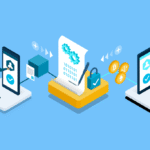Microsoft surprised everyone with one of its boldest moves in recent technology news. The tech giant’s announcement created waves across the industry and affected
everything from cloud infrastructure to developer workflows.
Let’s look at this technology news to understand how this change affects developers and users. Our detailed analysis covers technical
architecture changes, product ecosystem updates, and the implementation timeline. The announcement interestingly challenges current tech trends in cloud computing and
development practices.
Technical Architecture Changes
Microsoft’s infrastructure changes rapidly as the company pushes ahead with major technical updates. The company has moved 98% of its IT infrastructure to the cloud, marking a bold step forward.
Infrastructure modifications
Microsoft’s infrastructure overhaul puts Azure at its core. The company has rolled out several important changes:
- Automated self-service management environment
- Cloud-based monitoring and security tools
- Integrated backup and disaster recovery systems
- DevOps-centered operational framework.
In addition, Microsoft’s data centers come with multiple protection layers that deliver 99.999% availability to meet customer service agreements.
System integration challenges
Organizations face tough obstacles when they try to blend their existing systems. The biggest problem lies in connecting older applications to cloud services. Many businesses find it hard to handle security concerns and data protection needs.
System integration affects three key areas: business operations, technology infrastructure, and project governance. Network delays can slow down integration, especially when moving large amounts of data.
Performance improvements
These architectural changes have led to better performance across the board. The new system loads up to 50% faster and uses less memory. The Native Ahead-OfTime (AOT) compilation has made app packages eight times smaller.
The system uses continuous integration and development practices that create steady improvements and new features. The new architecture also offers georedundant backup and failover options that ensure strong disaster recovery.
Impact on Product Ecosystem
Microsoft’s latest tech updates reveal major shifts in their product ecosystem. Their focus on interoperability has transformed how their products connect, and
Fortune 500 companies have noticed – nearly 70% now use Microsoft 365 Copilot.
Changes to existing products
Microsoft’s core products have undergone vital updates. The company added dynamic watermarking for sensitive files and modernized user-defined permissions. Security improvements now work alongside new data aggregation functions in Excel, including:
- Python integration for advanced analytics
- GROUP BY and PIVOTBY functions for data processing
- Better DLP policy reliability across platforms
New feature implementations
Microsoft has placed AI-powered innovations at the forefront of its strategy. New autonomous agents have revolutionized sales, service, finance, and supply chain teams. Users report impressive results – teams save between 2.5 to 5 hours weekly.
Cross-platform compatibility
Microsoft’s cross-platform functionality has grown stronger. Their products now work naturally across multiple operating systems and devices. Developers can access technology and tools to create solutions that optimize market opportunities.
Microsoft’s Device Ecosystem Platform continues to grow with better security features and API functionalities. This platform’s integration capabilities benefit developers and end-users alike. Organizations can now easily implement cross-platform solutions thanks to support for various hardware configurations and form
factors.
Developer and User Experience
Microsoft’s latest developer experience updates show major improvements in how developers work with their tools. Our analysis reveals that developers are 42% more productive with better codebase understanding.
API modifications
Microsoft’s API landscape has undergone key changes. All API versions before 2021-08-01 will be retired. This update changes how developers work with Azure Resource Manager and needs updates to existing templates and tools. The platform now features better security controls and data source management capabilities.
User interface updates
A complete refresh based on Fluent Design principles has transformed the user interface. Developers are 50% more innovative with these user-friendly tools and
processes. The interface has:
- Softer, rounded menu buttons
- Automatic light/dark theme synchronization
- Customizable dashboard layouts
- Better file explorer integration
Development tool changes
Development tools have evolved significantly. Dev Home brings important improvements that give faster access to development infrastructure. Development teams report 50% less technical debt when they can quickly get answers.
Dev Drive, built on ReFS technology, proves highly effective with up to 30% improvement in file system performance for build times. These updates line up with Microsoft’s dedication to increasing developer efficiency while maintaining well-being.
Implementation Timeline
Microsoft’s latest tech news reveals their ambitious rollout plan. The company has created a detailed transition that will run from late 2024 through 2025.
Rollout phases
Microsoft chose a measured approach for their deployment. The original phase starts in October 2024 and targets Azure portal, Microsoft Entra administration center, and Intune admin center users. Organizations can delay enforcement until March 2025 if they face complex scenarios.
The implementation has these key phases:
- Start Phase: Original preparation and platform readiness
- Pre-Transition Phase: Begins weeks before the scheduled transition
- Transition Phase: Core implementation (approximately 30 minutes)
- Post-Transition Phase: User credential updates and validation
Migration strategy
Microsoft developed a full migration approach. They implemented a transition manager system to run profiling sessions and understand each company’s deployment needs. The strategy helps you retain control while some administrative functions will be temporarily restricted during the transition period.
Support transition plan
Microsoft built a reliable support framework. They provide dedicated transition managers who help plan and coordinate activities. The process continues until organizations complete their validation tests listed in the Post-Transition Action Items Table.
New capabilities will launch within the 2024 release wave 1 from April 1, 2024, to September 30, 2024. Notwithstanding that, Microsoft stresses that this transition needs to be handled as an IT project, which requires the core team to have a dedicated project manager.
Conclusion
Microsoft leads a remarkable evolution in the tech industry. The tech giant now runs 98% of its infrastructure on the cloud, while integrating AI throughout its product ecosystem. This approach demonstrates their readiness to build future-proof solutions.
Developers will benefit substantially from these updates. Teams have reported a 42% increase in efficiency and cut technical debt by 50%. Microsoft’s implementation roadmap extends from late 2024 through 2025, which helps organizations plan their transition effectively.
These updates go beyond technical improvements. They mark a transformation in cloud-based business operations. Teams need preparation now to leverage Microsoft’s improved capabilities during the rollout phase.
The future looks bright with better cross-platform compatibility and AI-powered features. Companies that adopt these changes early will see better results in their
operations and tech advancement.








Leave a Reply